From the Georgian period to the Victorian,
the rich continued to eat grandly, but it was the middle classes, and the upper
working class that really felt the benefit of industrialization when it came to
eating. The kitchen technology recommended to the poor by Soyer and his
contemporaries was just the thing for those classes with new spending
power who were keen to climb the social ladder. As well as increased wealth in
the expanding middle class, there was far more available to buy. Industrial advances
meant that food could now be tinned to last what must have seemed ages to
people used to fast spoilage; pre-made powders for eggs, custard, chocolate and
spices like mustard continued to remove toil from food preparation; and new and
exciting flavours could be bottled and sold as sauces – many of them by
companies and brands still going strong today.
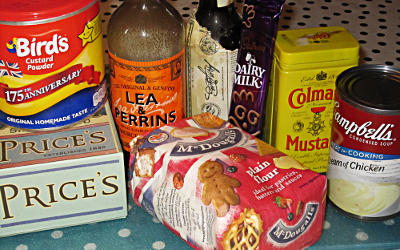 |
Not actually Victorian-era artefacts |
One of many, many editions of Mrs Beeton's collection
Eliza Acton was the first, a woman who
began as a teacher and poet before publishing Modern Cookery in All Its Branches for Private Families in 1845.
Her carefully-considered, tried and tested recipes were ideal for the novide to
follow, as she included a novel idea – an itemised list of ingredients and
measurements at the end of each recipe. This was the first time anyone had done
that, and she was widely copied – not least by Mrs Beeton, who moved the list
strategically to the start of each recipe, giving us what has become the
standard form. The style used by both women, that of a housewife sharing her
own experiences , was popular – enough so that the character of Mrs Beeton was
deliberately cultivated as a wise, motherly authority figure… despite Isabella
being around twenty-five when her Book of
Household Management was first published in 1861. Most of her recipes and
household advice, sad to say, was lifted from a variety of other sources – including
Eliza Acton, Alexis Soyer, and Mrs Raffald from the century before. Not that it
appeared to matter – the books sold well enough that Mrs Beeton stayed in print
for over 70 years (my copy of the book was borrowed from my mother’s shelf of
cookbooks) and Eliza Acton was cited as a major influence by none other than
Delia Smith.
The recipes the two women included in their
respective books range from ‘Curried Maccaroni’ to ‘Sweet Pickle of Melon
(Foreign receipt.)’, but there is also a strong emphasis on the value of plain
cooking and reducing waste that Hannah Glasse or Elizabeth Raffald might have
been proud of. Here’s one from Mrs Beeton for using up cold mutton, which also
make full use of the British love of gravy…
Not mentioned - grind the mace thoroughly before adding
(Transcribed from Mrs Beeton’s Cookery Book, 1914 edition.)
MUTTON COLLOPS
INGREDIENTS – 6 or 8 slices of cooked mutton, 2 shallots or 1 small onion finely chopped, ½ a teaspoonful or powdered mixed herbs, ½ a saltspoonful of mace, 1 dessertspoonful of flour, butter or fat for frying, ½ pint of gravy or stock, lemon-juice or vinegar, salt and pepper. METHOD – Cut the meat into round slices about 2 ½ inches in diameter. Mix together the shallot, herbs, mace, and a little pepper and salt, and spread this mixture on one side of the meat. Let it remain for1 hour, then fry quickly in hot butter or fat, taking care to cook the side covered with the mixture first. Remove and keep hot, sprinkle the flour on the bottom of the pan, which should contain no more fat than the flour will absorb, let it brown, then add the gravy or stock. Season to taste, boil gently for about 15 minutes, add a little lemon-juice or vinegar to flavour, and pour the sauce round the meat.
TIME – altogether, 1 ½ hours.
AVERAGE COST, about 1s. 8d.
SUFFICIENT, 1 lb. for 3 or 4 persons.
SEASONABLE at any time.
I'm not sure how much difference letting it sit for an hour makes.
This isn’t difficult to make, although
getting the onion mixture to stay on the meat when cooking is easier said than
done – I added a splash of water to help hold it together, and still had
trouble, but aside from untidiness this doesn’t matter too much. The meat I
used was cold lamb rather than mutton, since mutton is pretty uncommon these
days, but it’s from the same animal, so I wouldn’t worry too much. In fact,
this would also be delicious with cold beef – it’s hard to go wrong with fried
meat, onion and gravy.
Lemony gravy
Speaking of gravy – or stock, but I had
leftover gravy from the roast in any case, so I used that – I tried it with a
squeeze of lemon. It sounded peculiar, but it makes really good gravy – cutting
through the fatty meat very nicely. (And if your meat wasn’t fatty before, once
fried it will be.) Delicious and economical comfort food, great in chilly
weather.
To finish us off with the Victorians, I
went back to aspirational cooking, for the middle classes keen to impress. Back
in 1782, a visitor to the country had lamented the British inability to make
coffee, and event Mrs Beeton warned that it was ‘difficult to make.’ But Eliza
Acton provided a few daring recipes, and being a coffee-lover myself, I gave
one a go.
'Vulgar' also meaning simply 'in the vernacular language'
Acton is not necessarily insulting the French here
Acton is not necessarily insulting the French here
It sounds very like a modern Irish Coffee –
hot coffee, with sugar and a spirit – only missing the cream. Warning bells
should go off, however, when reading how much sugar she suggests – ‘almost to
syrup’? Apparently the famous British love of sugar was still very much in
place. Well, I followed her instructions to the letter… several times over.
Try as I might, I could not get the brandy
to light. In the end, I heated the syrupy, highly-alcoholic coffee over the
stove to burn off some of the spirit before tasting, to little avail – it was
so sweet and strong it was virtually undrinkable.
Hopefully Eliza Acton had more success than I did. A sad end to an entertaining experiment, and to this stage of UK Food History! May my future forays into historical food be more successful that this incident - I can hardly wait.
Hopefully Eliza Acton had more success than I did. A sad end to an entertaining experiment, and to this stage of UK Food History! May my future forays into historical food be more successful that this incident - I can hardly wait.

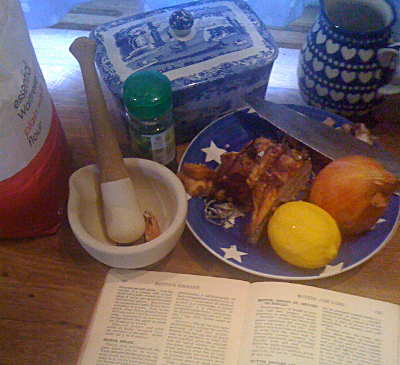
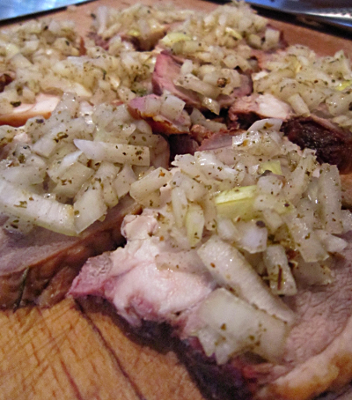
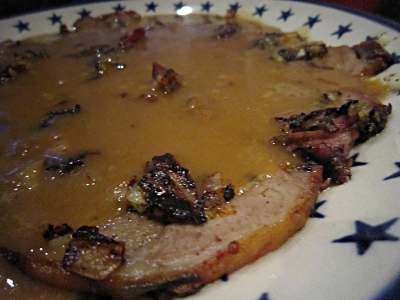



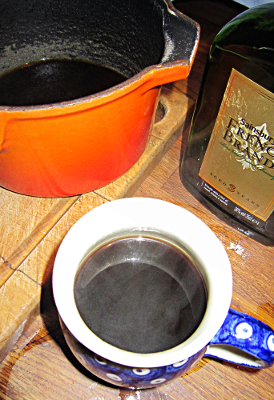
No comments:
Post a Comment